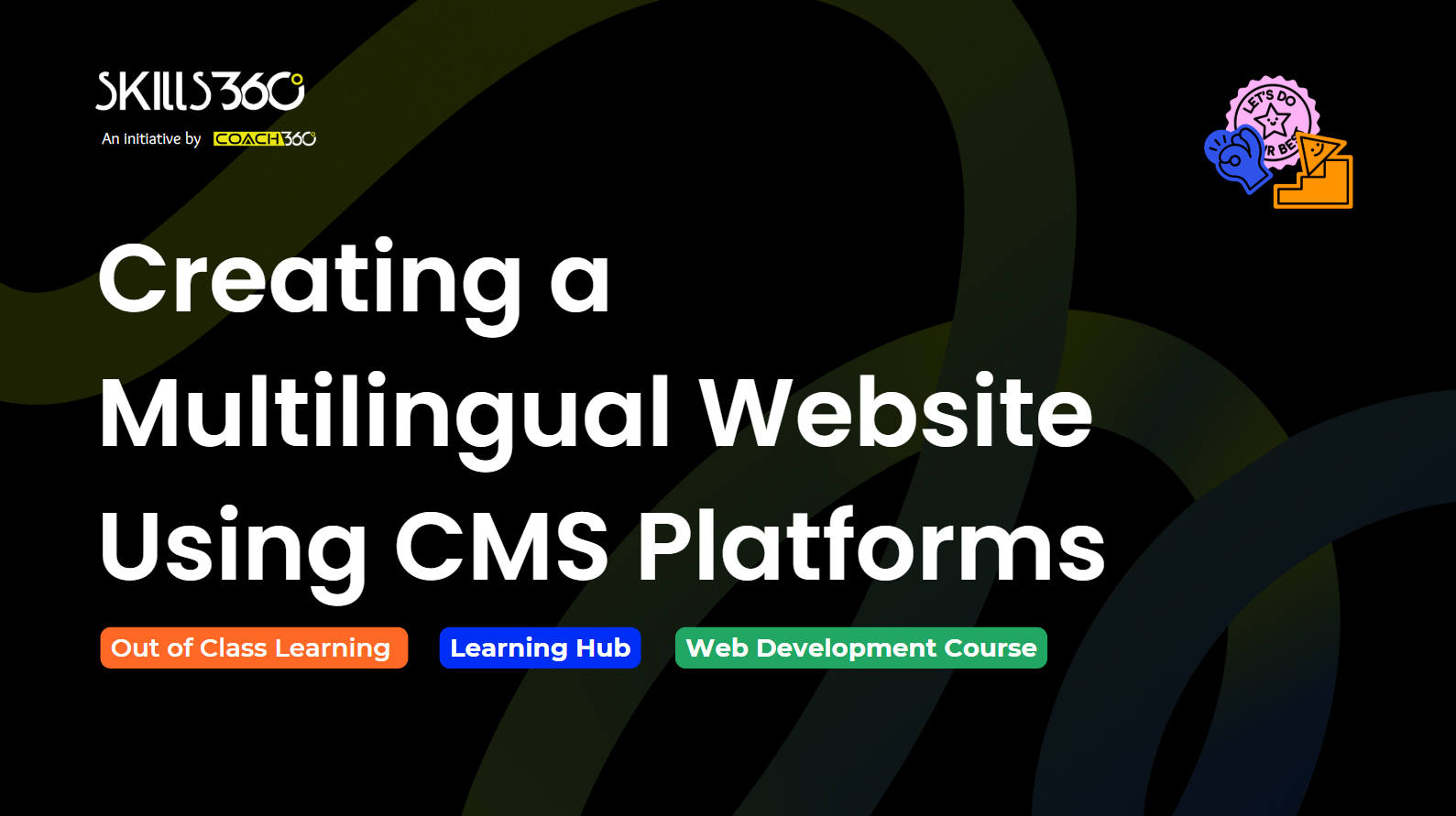- Featured article
- People at Skills360 19 - June 2025 | 12 min read

In the era of digitalization, language is more than just a tool for communication; it is also a pathway. Regardless if you are a business, educator, or creative, engaging with people in their native language is vital. Accessing an increasingly more diverse online user base and society means multilingual websites will only get more important. For learners at Skills360 and beyond, knowing how to develop multilingual websites with CMS platforms leads to global access, better engagement, and a stronger digital presence.
A multilingual website promotes connection, accessibility, and inclusivity in addition to translation. Users are more likely to engage, trust, and interact with a brand when they arrive at the website and see content in their preferred language. Additionally, it enables companies and content producers to connect with audiences outside of their local market.
Even focusing on Urdu and English together can greatly increase a site's usability in areas like Karachi and other urban centers with diverse linguistic communities. Offering a variety of language options demonstrates your understanding of your audience's needs and your readiness to meet them where they are.
Gone are the days when one had to have deep technical know-how in order to build one's own website. However, more importantly, these modern CMS platforms are bringing tools that can cater for multi-language content management, thus becoming more applicable for multilingual development
In these times, instead of having distinctive sites for each language, CMS platforms can manage the translated versions all from one dashboard, which greatly simplifies the task of editing, updating, and arranging that multilingual content. Skills360 provides training on how to master using CMS applications such as WordPress, Joomla, and Strapi, making one manage the intricacies of multilingual websites without sacrificing performance or quality.
Gone are the days when one had to have deep technical know-how in order to build one's own website. However, more importantly, these modern CMS platforms are bringing tools that can cater for multi-language content management, thus becoming more applicable for multilingual development
In these times, instead of having distinctive sites for each language, CMS platforms can manage the translated versions all from one dashboard, which greatly simplifies the task of editing, updating, and arranging that multilingual content. Skills360 provides training on how to master using CMS applications such as WordPress, Joomla, and Strapi, making one manage the intricacies of multilingual websites without sacrificing performance or quality.
Before translating any content, it’s important to plan your site structure and define what needs translation. Some websites translate every page; others focus only on key content like the homepage, service pages, or contact forms. It's also worth considering whether you’ll be using human translators, AI-powered translation tools, or a hybrid approach.
One of the common challenges is maintaining consistency across languages. Text expansion, for instance, can alter layout and design. A sentence in English might be significantly longer when translated into Arabic or French. Understanding these nuances helps prevent design breakage and ensures the user experience stays seamless regardless of language.
An even greater emphasis is placed on good design when your site operates in multiple languages. From choosing fonts that show multiple character sets in a single font to creating layouts that support left-to-right and right-to-left language layouts, all decisions are made in the name of design.
Another important matter is the language switcher itself. The placement of the language switcher should be easy to find (ideally at the top of every page) so that it can be quickly located and the user can change to their preferred language without issue.
The user experience itself should remain consistent across languages (even if the content varies) so that they are confident in the site. At Skills360 we train our students on CMS tools; however, we also train them as UI/UX designers to develop user-centric, multilingual sites while being aware of these nuances but critical differences.
Once a site is live, providing updates for all versions in the native language is now part of the regular workflow. A CMS can make this a little easier, with some systems providing the ability to edit a page side-by-side, or manage the language versions via different dashboards. In WordPress, for example, WPML or TranslatePress allows you to easily connect and compare each translated and original version by page.
In more sophisticated CMS platforms, you can assign a different user role (i.e., translator or content manager) to translators and content managers by language as needed. This is especially beneficial for larger teams or organizations with language-centric content creators.
The need to stay on top of updating translations is something we focus on in our training sessions at Skills360—translation is not a part of the job that's done once. As content changes, translation should change alongside it. Finding a way to keep everything in alignment helps ensure that each particular region is being provided with the latest and updated experience.
This multilingual website allows internal site visibility in local search engines. However, this works rightly when the website is optimized appropriately. Specific tags and instructions that search engines, such as Google, use to tap what version of their site is meant for which audience include the likes of hreflang.
Every language should have its unique URL structure, such as /en/ for English or /ur/ for Urdu, and have its content fully translated, including metadata like page titles and descriptions. Automated machine translations that are poorly refined will hurt SEO, so we advocate a thoughtful, quality-first approach to localization.
Creating a multilingual site using CMS tools is now not a difficult or expensive project. Using the right tools, approach, and mindset, it's a very attainable aim even for novice developers or modest company owners. Multilingual features will give you the upper hand whether you are catering to a bilingual audience in Pakistan or growing your digital reach into global markets.
We at Skills360 enable students to acquire the creative self-assurance and technical know-how required to bring these types of websites to life. From planning through publishing, we help our pupils to develop content-rich, multilingual websites that stand out in the modern worldwide digital environment throughout the entire process.


Get curated emails on out of class learning and work on your skills on your free time.